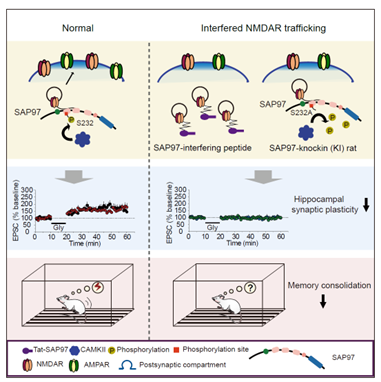NMDA receptor (NMDAR) plays a vital role in brain development and normal physiological functions. Surface trafficking of NMDAR contributes to the modulation of synaptic functions and information processing. However, it remains unclear whether NMDAR trafficking is independent of long-term potentiation (LTP) and whether it regulates behavior. Here, we report that LTP of AMPAR and NMDAR can occur concurrently and that NMDAR trafficking can regulate AMPAR trafficking and AMPAR-mediated LTP. By contrast, AMPAR trafficking does not impact NMDAR-mediated LTP. Using SAP97-interfering peptide and SAP97 knockin (KI) rat, we show that the effect is mediated by GluN2A-subunit-containing NMDARs. At the behavior level, impaired NMDAR trafficking results in deficits in consolidation, but not acquisition, of fear memory. Collectively, our results suggest the essential role of NMDAR trafficking in LTP and memory consolidation.


paper link: https://www.sciencedirect.com/science/article/pii/S2211124722010348?via%3Dihub